In elementary school, the assignment to write about your summer vacation was always my favorite. We just got back from an impromptu trip to Wisconsin, and I planned to write about the native plants growing beside the highways, and how hanging baskets and window boxes of petunias and geraniums refute my criticisms of annuals. Then we visited Taliesin.
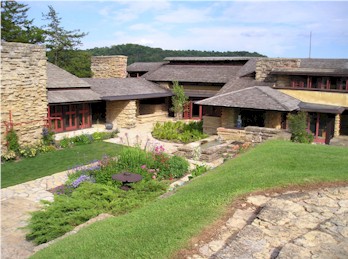
While this blog focuses on me learning to garden with native plants, perhaps some of you share my interest in created environments of all kinds. And there are some gardens there. Taliesin was a living laboratory, a place for Wright to try out his ideas, and although the gardens went through several iterations, they’ve been restored to the way they were at the time of Wright’s death in 1959. (Why not to the way they were in 1914? In 1925? I’m always interested in what we choose to preserve.)
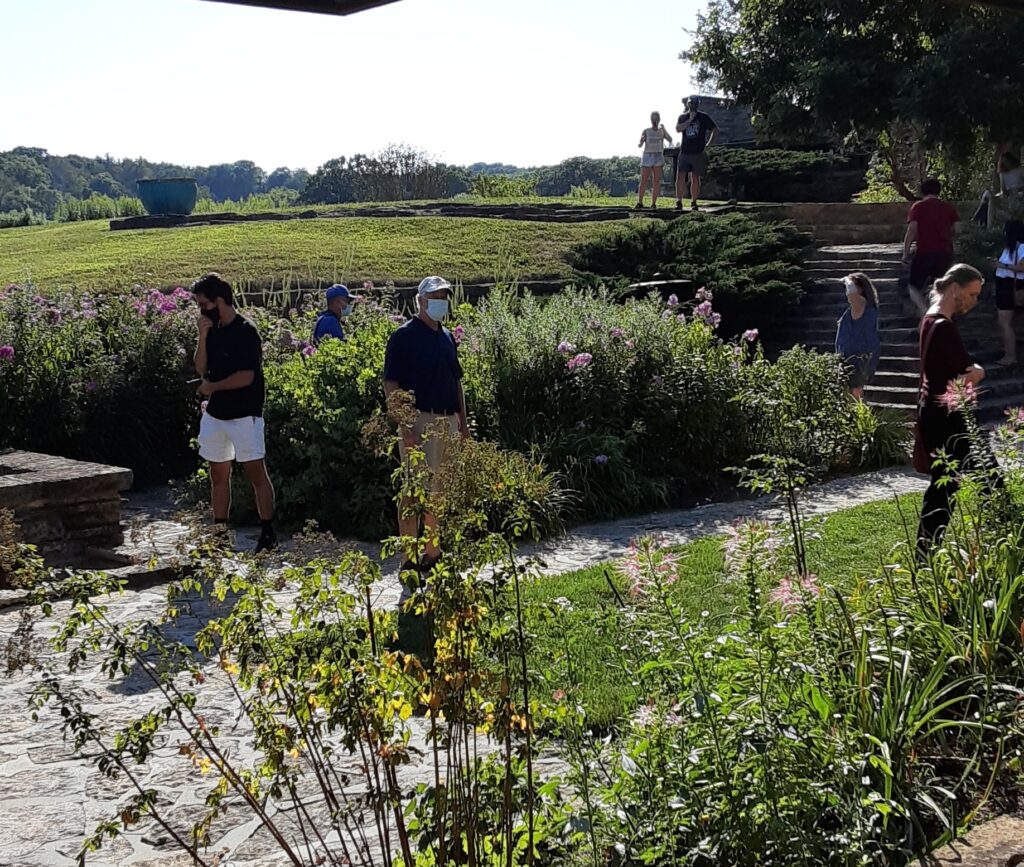
Visitors enter into an enclosed Japanese-feeling courtyard with koi ponds (empty) and an arbor constructed of painted drainpipes supporting a wisteria.
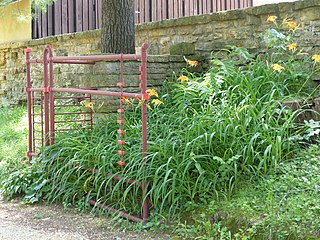
What I know about Frank Lloyd Wright is about as superficial as an encyclopedia entry, but everybody knows a little about him. My husband is an architect, and we sometimes visit Wright buildings when we travel. If there’s one around we’ll check it out: Taliesin West, the reconstructed Bachman-Wilson house at Crystal Bridges. I think what we’ve seen is pretty cool, but I was unprepared for just how special I found Taliesin. Seeing it made me want to live a better life.
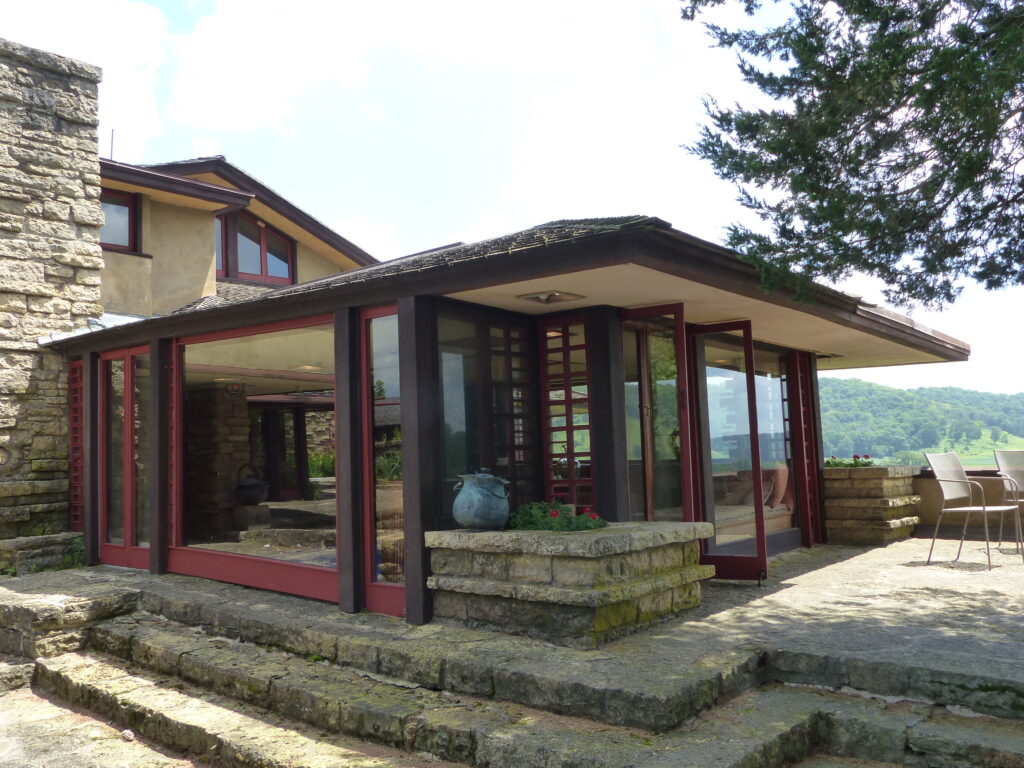
Being inside this house is like being (some might say trapped) within a distinctive intelligence. It’s an expression of Wright’s mind and imagination. The building doesn’t just shelter and house. It makes an argument about how to live.
One quality he famously emphasized was a connection to the outdoors. The house is built on hillside, and its main feature is enormous windows overlooking the valley below. Only glass separates you from trees and grass.
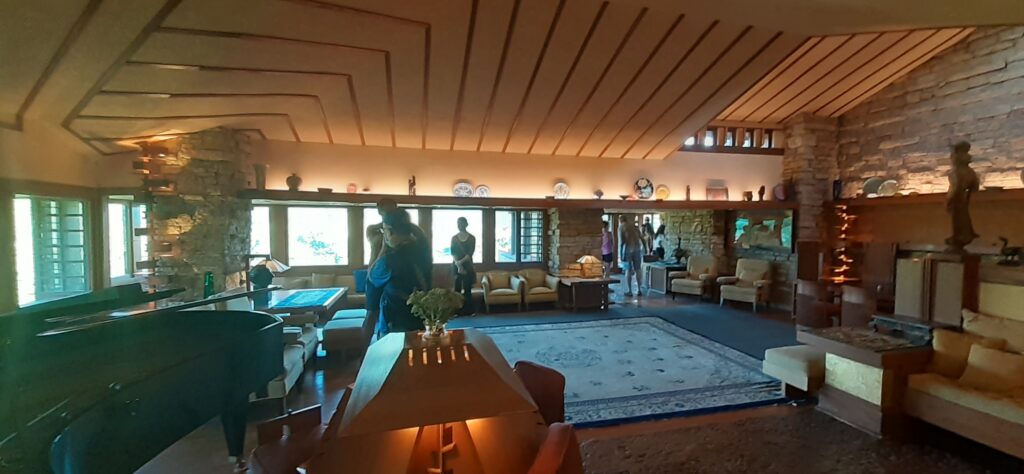
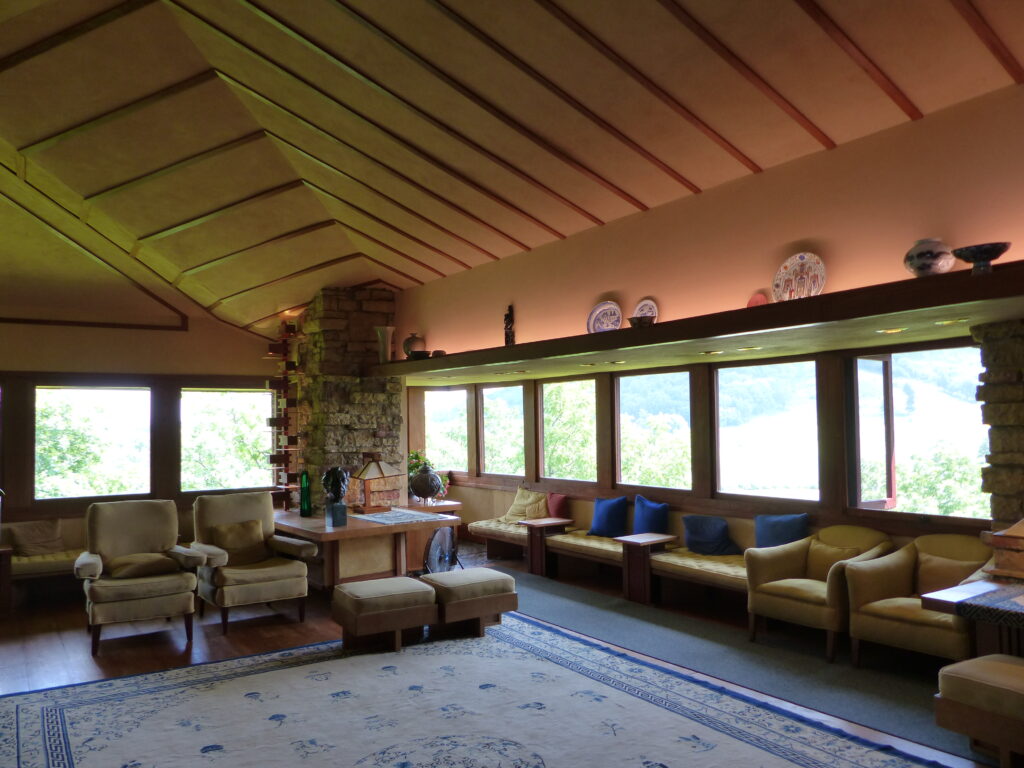
This longing for a connection to the outdoors seems to me to be a recent phenomenon. Only people who are separated from the outdoors want connection to it. Previous generations wanted to keep the outdoors out. Their goal was to lessen discomfort. They constructed buildings to shut out the cold, wet, stinging insects, and other pests.
Although the view from Taliesin is pastoral, the house doesn’t evoke nostalgia. Wright used contemporary materials: plate glass, steel-reinforced concrete. The house nestles into the side of a hill, but at the same time it’s distinct from it, with straight lines and horizontal planes that don’t exist in nature. I find the tension this creates pleasing.
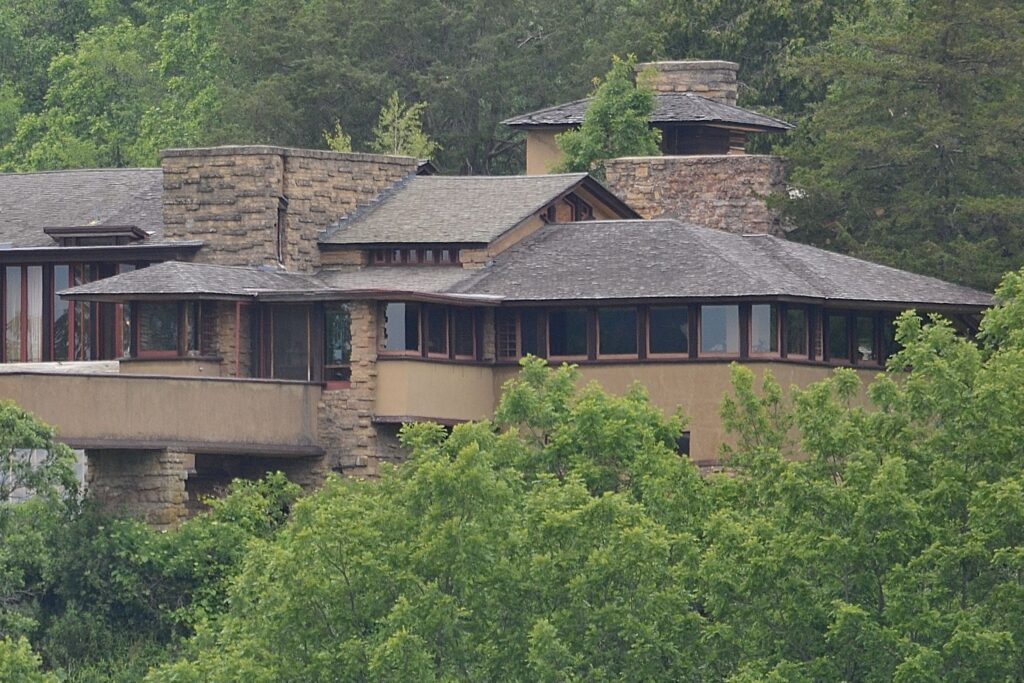
I loved the way it felt inside, but I think I’d feel uncomfortable living in a Frank Lloyd Wright house—as I understand most residents did since the structures famously leaked and were impossible to heat. Taliesin is a house for extraverts. It’s huge, for one thing, and the design seems to force inhabitants to spend all their time together in one big room. That may be fine for a family who likes to read aloud and perform music together, but I’d miss privacy. I thrive in a study carrel or attic nook. (Actually, this preference for sequestering myself is one I’m trying to combat by starting a blog.) I’m not too concerned about Wright’s tiny kitchen—I’m a messy cook and prefer to close the doors and shut others out while I work—but are there any closets? A Wright house forces residents to live in the present. There’s no room for memorabilia or outgrown clothes (sentimentality and magical thinking). Perhaps this is good. They kept busy enjoying the views and basking in the glow of the natural light spilling through the plate glass windows or, when it rained, moving buckets around to catch the drips.
I think it’s customary to end blog posts with a question to encourage comments. Have you visited any houses designed by Frank Lloyd Wright, and what did you think? What about them appealed to you, and what didn’t?
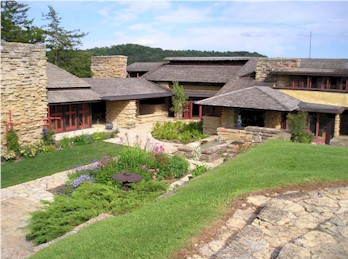
I like wild beds too, but then it gets out of control so we are using river rocks to help control the chaos. I like your wright blog. Interesting.
River rocks sound lovely. Did you get them in Kansas City?
I love this! It’s a great respite from the incessant and debilitating news. Bleh!
I’ve got a FLW book that you remind me to revisit. But your blog is easier for me to make the letters larger, so I might stay here lol!
Great pictures, too. What a life he had!
Yay! My first comment! Have you read Deb Olin Unferth’s piece about FLW? She read it at The Writers Place. I loved it–and I love Taliesin. Thanks, Laura!